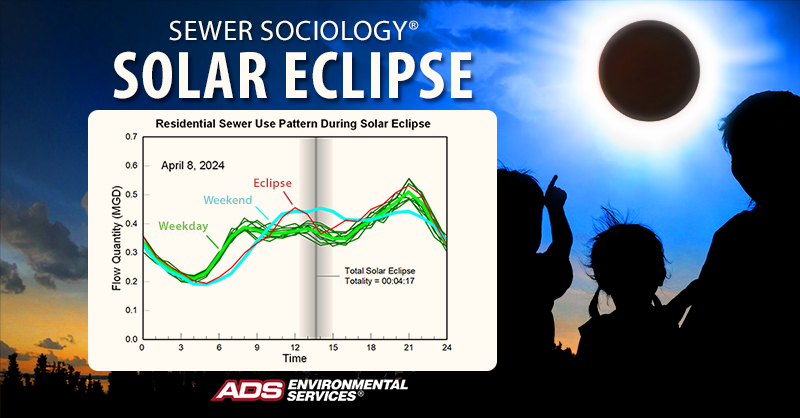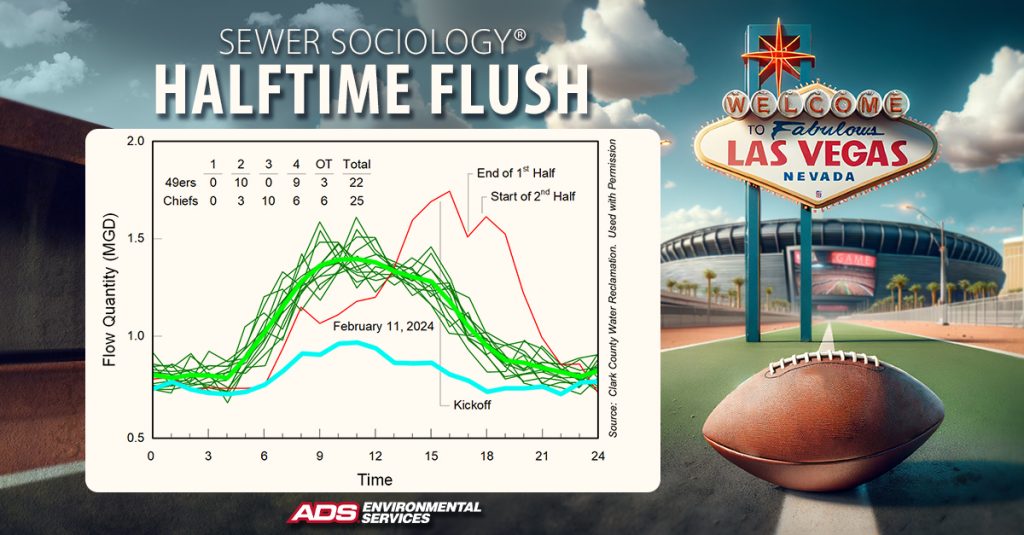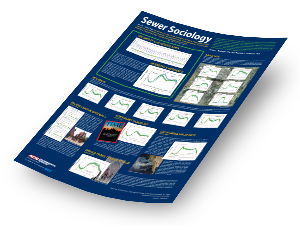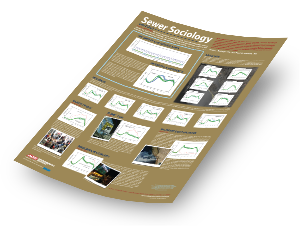Sewer Sociology

Sewer Sociology has direct applications to sewer design, hydraulic modeling, and real-time control:
- Forecasting sewer flow rates is an important part of sewer design, and these design assumptions are often based on published or regulated per capita values. A closer look reveals that the underlying assumptions are often limited and/or dated. Sewer Sociology offers the opportunity to confirm or update per capita sewer use for a variety of land use characteristics.
- Modeling dry weather sewer performance requires knowledge of anticipated diurnal patters from various land use areas, and the information available to hydraulic modelers in this regard is often limited. Sewer Sociology offers the opportunity to develop a library of diurnal patters to sharpen the performance of hydraulic models.
- Real-time alarming and real-time control of sewer systems requires knowledge of subtle shifts in diurnal patterns that naturally occur in sewer systems. It is a weekday or weekend? Is it a holiday? Are local schools in session or out for a break? All of these conditions result in unique signatures in sewer use patterns which can affect real-time alarming and real-time control.
Download the High Resolution Sewer Sociology Posters:
Typical Four Week Hydrograph
This hydrograph displays flow monitor data from a residential area recorded over a four week period during normal dry weather conditions. Note that a repeatable daily or diurnal pattern is observed.

How Events Affect Sewer Flow Patterns
The Powerful Perception Behind Sewer Sociology

April 8, 2024: Total Solar Eclipse
Did you catch the solar eclipse on Monday? I sure did . . . through the eyes of a sewer. A total solar eclipse is a big deal and generates a lot of interest. This means that a sewer sociologist smells a good story. Take a look.
Sewer use from a residential area in Central Texas located in the path of totality is shown in the graph below. Typical weekdays are shown in green. Typical weekends are shown in blue, and the day of the solar eclipse is shown in red. Note that even though the eclipse occurred on a weekday, this day starts out like a weekend as schools were canceled for the day and many people took the day off. Totality occurred around 1:30 PM, and sewer use decreased accordingly as residents took a collective pause to enjoy this unique celestial event. After the eclipse, sewer use returned to its normal weekday pattern as life returned to normal.

Sewer use from the venue and the surrounding area is shown in the graph below. Typical weekdays are shown in green. Typical weekends are shown in blue, and game day is shown in red. The difference between the red curve and the blue curve is the added flow attributed to the Super Bowl.
Sewer flows increase dramatically as fans arrive at the stadium. However, note how flows decrease after kickoff as they settle in and focus on the game. Flows increase a bit during halftime – resulting in a modest halftime flush – and decrease again as play resumes in the second half. This game was close and well-contested by both teams. The Chiefs (and Taylor Swift) are happy with a Super Bowl win, and I am happy with another Sewer Sociology win!


